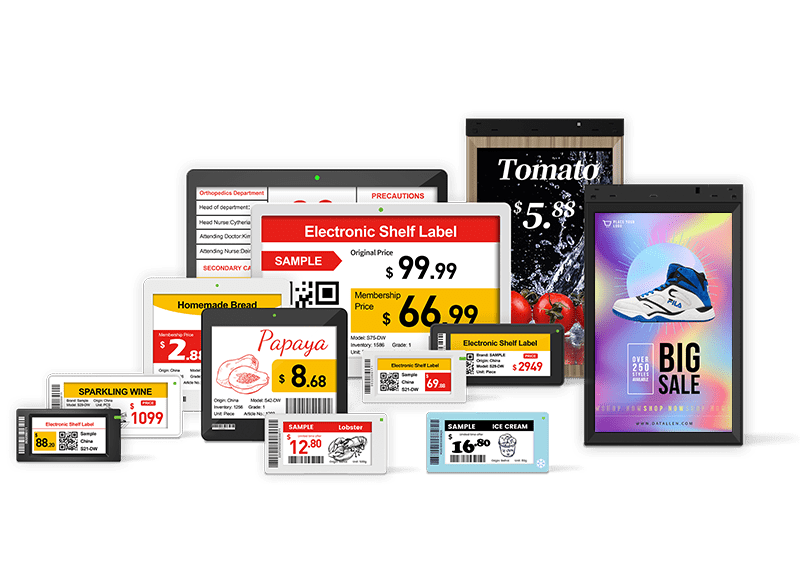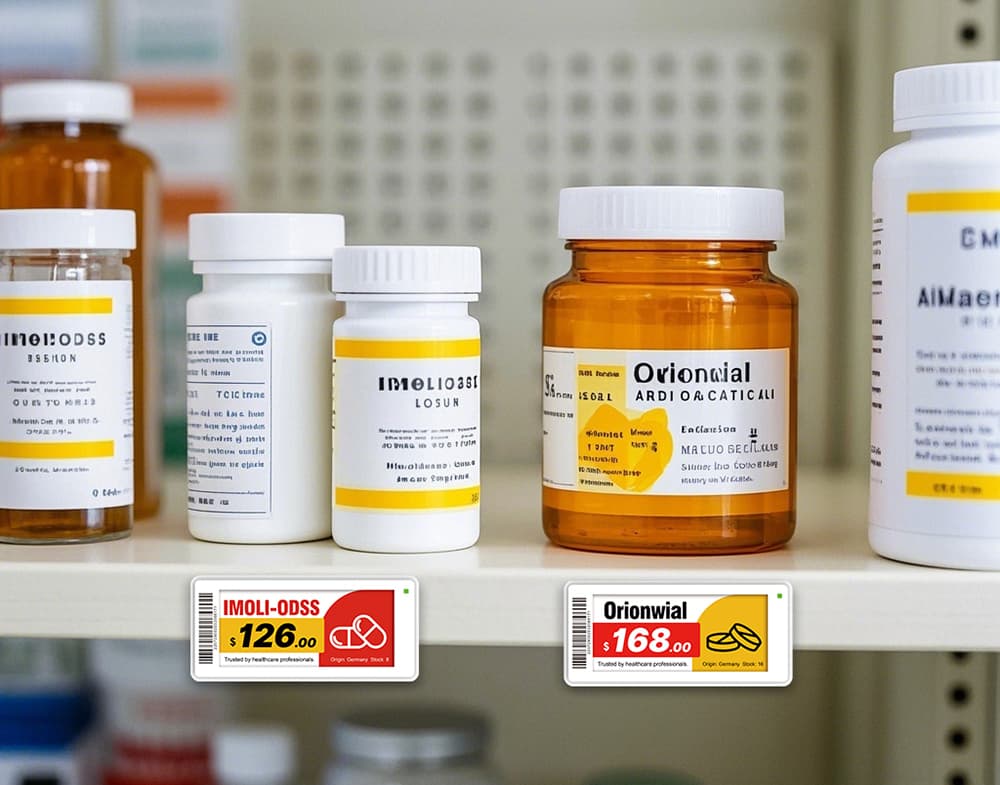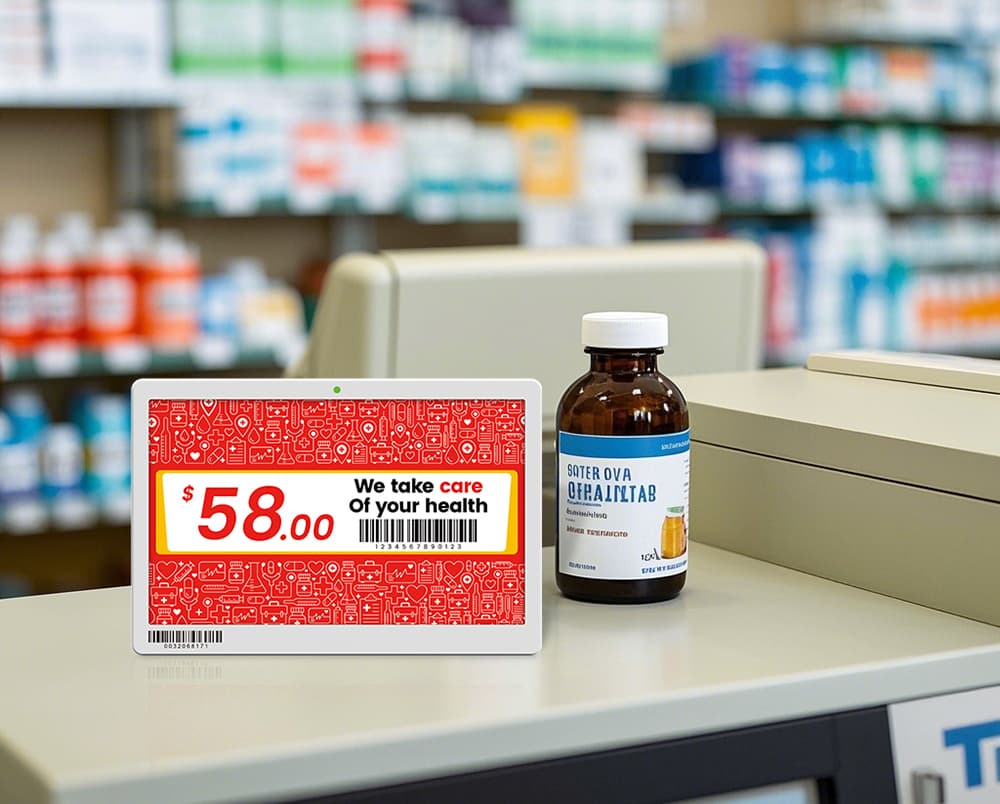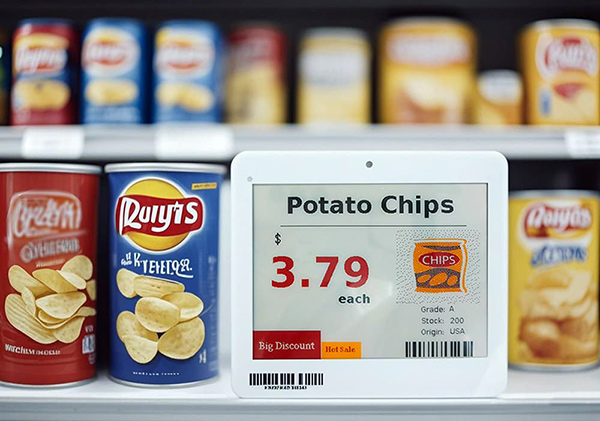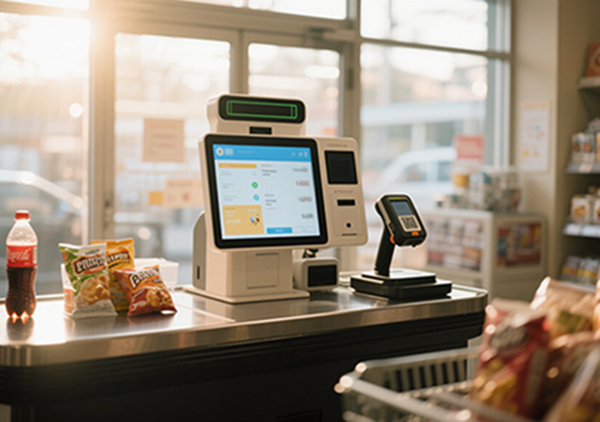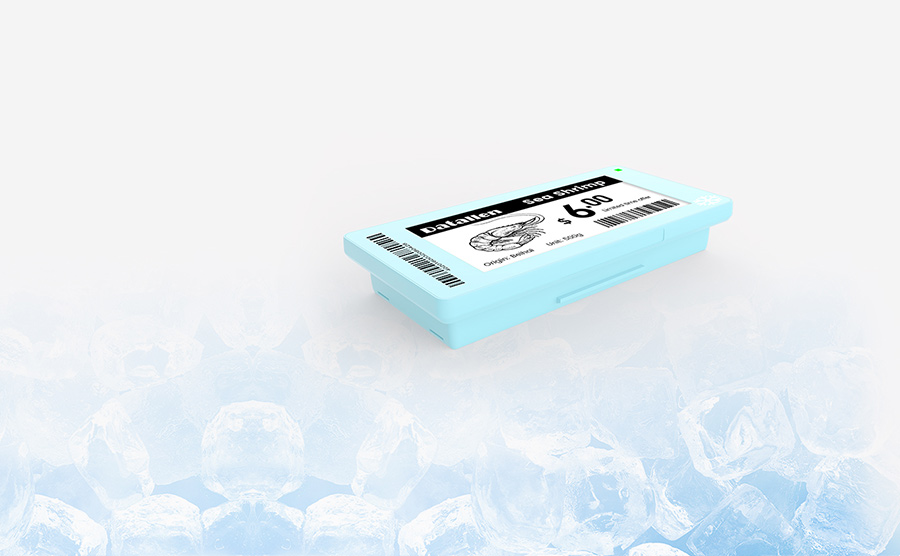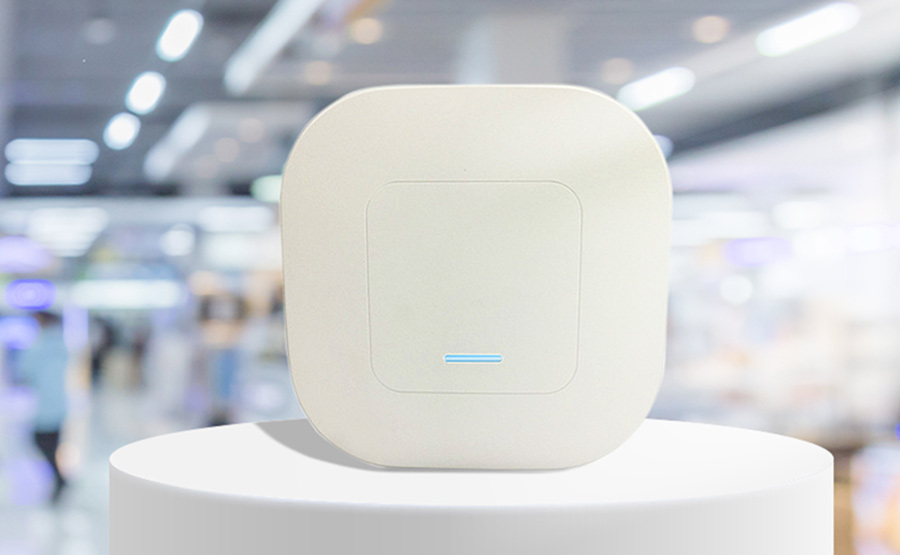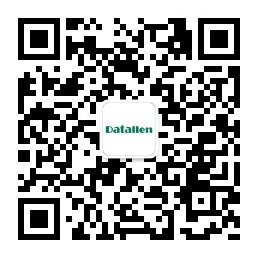Smart pharmacies apply modern technologies – like IoT devices, automation, and data connectivity – to improve medication management and patient care. In a smart pharmacy, tasks once manual (such as updating shelf labels or checking drug inventory) become digitized and automated. For example, e ink price tag connects directly to the pharmacy’s data systems, showing real-time drug details and even lighting up to highlight the correct medication during retrieval.
This “smart” approach means fewer errors and faster service: smart pharmacy systems reduce the time spent on routine tasks so pharmacists can focus on clinical consultations. In some cases, automation extends beyond the pharmacy itself – pharmacies may integrate with patient wearables or home health devices, evolving into a smart health pharmacy ecosystem that links medication dispensing with overall patient monitoring.
Why Are Smart Pharmacies Needed?
Traditional pharmacies face many challenges: updating paper labels, conducting time-consuming stock checks, and avoiding drug mix-ups. Long prescription wait times and manual inventory often burden staff and frustrate patients. Smart pharmacy solutions directly address these issues. Automation cuts prescription pickup delays and reduces dependence on high staffing levels.
Real-time digital tools like e ink price tags prevent outdated information and highlight expiring drugs, dramatically lowering the risk of mistakes. In short, making a pharmacy “smart” helps solve its biggest pain points: it speeds up service, improves accuracy, and frees staff to focus on patient care rather than paperwork.
Which Technologies Enable Smart Pharmacies?
Smart pharmacies rely on a blend of hardware and software. Key components include:
- Automated Dispensing Systems:
Robots and smart cabinets automatically sort and dispense medications. These systems connect to pharmacy IT, enabling fast, accurate dispensing and real-time condition monitoring. Automated dispensers sync with medical records and ensure regulatory compliance, improving efficiency and accuracy.
- E ink Price tags (ESLs):
Battery-powered digital tags placed on medication shelves display drug names, strengths, prices, and other data, all wirelessly updated. Staff can search for a drug in the system and have the corresponding label flash, guiding them to the right shelf. ESLs eliminate constant paper-printing and slash the typical human error rate in inventory checks. They also integrate with health IT systems, so price changes and stock levels update instantly.
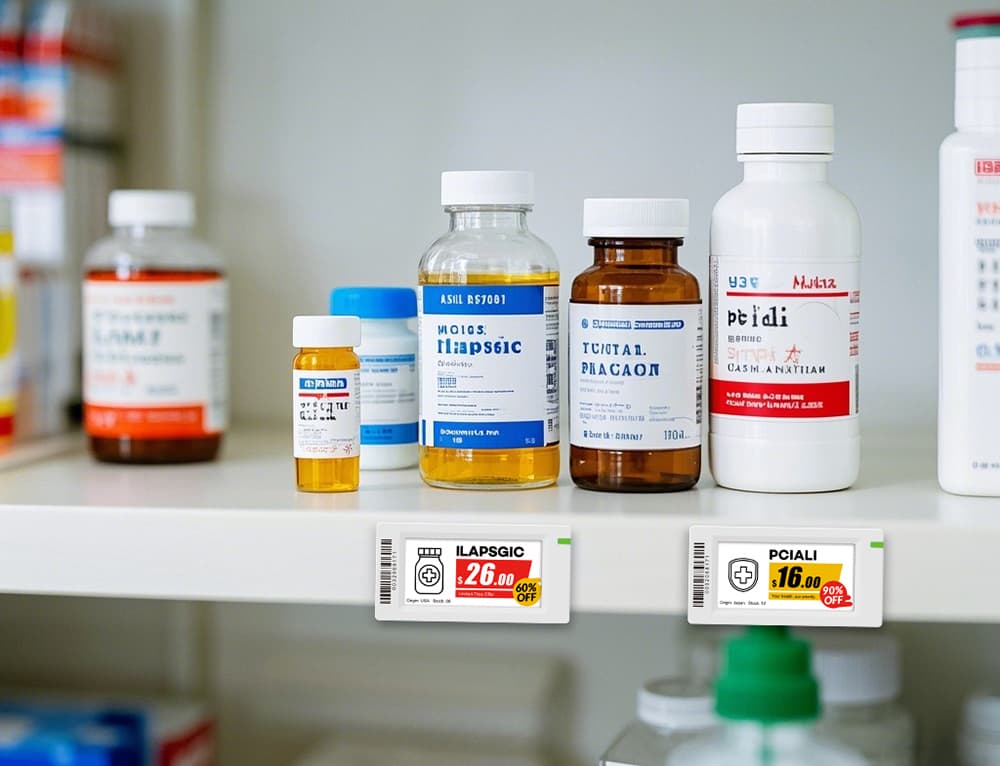
-LCD Digital Signage:
Large screens in waiting areas or over counters keep patients informed and engaged. These screens show health tips, promotions, prescription wait times, and pharmacy news. Digital signage is more engaging than static posters—playing video, animations, and live data feeds—to manage customer flow and communicate timely information.
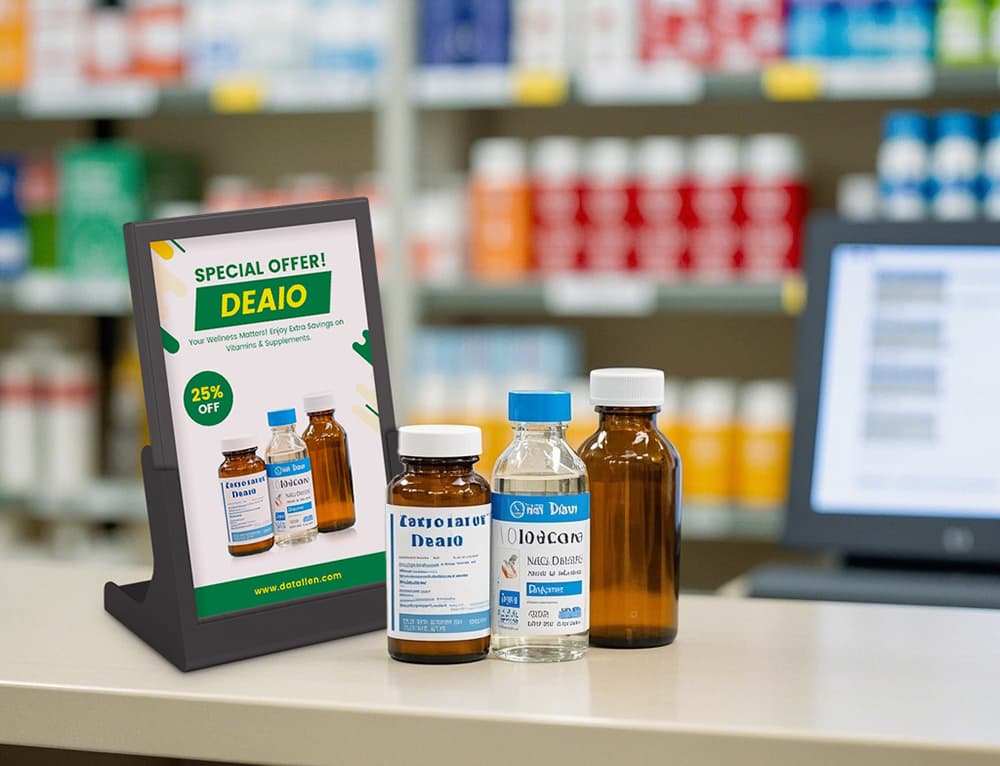
- IoT Sensors & Connectivity:
Sensors monitor inventory levels and storage conditions, alerting staff when stock is low or when refrigerated medications exceed safe temperatures. Some systems track at-home dosing with IoT-enabled pill dispensers, recording usage and sending adherence data back to the pharmacy.
- Artificial Intelligence and Data Systems:
AI analyzes patient records for interactions or allergies and forecasts demand to optimize stock. Analytics dashboards reveal purchase patterns and busy hours to inform staffing and inventory decisions.
Together, these technologies make pharmacy operations more efficient and data-driven. For example, an integrated smart medical platform can link bedside screens, electronic labels, and ward displays via a single management system, lightening the burden on healthcare staff and elevating patient care.
What Are the Benefits for Patients and Pharmacists?
Smart pharmacy solutions offer clear advantages for both patients and pharmacy teams:
- Faster, More Accurate Service:
Automated dispensing and streamlined workflows cut patient wait times dramatically. Real-time electronic labeling and digital checks reduce prescription errors.
- Better Patient Experience:
Patients track their medication orders or receive notifications when prescriptions are ready. Digital kiosks and apps allow scheduling refills or remote consultations. In-store screens display usage instructions and health tips to inform and reassure.
- Enhanced Safety and Compliance:
Automation enforces checks on expiration dates and storage conditions. IoT sensors flag safety issues immediately. Automated dispensing logs and electronic records help meet regulatory requirements and simplify audits.
- Improved Workflow and Insights:
Dashboards show which items sell quickly and when the busiest times occur, enabling better staff scheduling. Digital systems free pharmacists from repetitive tasks, letting them focus on patient counseling and care.
- Dynamic Promotions & Flexible Pricing:
E ink price tags and digital signage allow instant price changes and targeted promotional messaging. Pharmacies can update deals and display product information on the fly without manual label changes.
- Operational Efficiency:
Automation and connectivity speed up routine tasks, reducing the workload on staff and enabling pharmacies to serve more customers with the same resources.
How Do Digital Pharmacy Services Work?
Digital pharmacy services, or telepharmacy, bring pharmacy functions online:
1. Online Consultation/Prescription: Patients consult via telehealth and receive a digital prescription.
2. E-Prescription and Processing: The prescription lands in the pharmacy’s system for pharmacist review.
3. Dispensing & Delivery: Medications are prepared and shipped to patients, often with real-time tracking.
4. Ongoing Support: Patients message the pharmacy team, schedule refills online, and receive adherence reminders.
This digital model combines automated dispensing, secure data management, and remote support, making pharmacy care accessible without a store visit.
What is a Smart Health Pharmacy?
A smart health pharmacy integrates with broader healthcare systems and patient devices:
- Patient Monitoring Integration: Pharmacies interface with wearables and home sensors. IoT-enabled dispensers record dosing and send adherence reports to providers.
- Supply Chain Transparency: Blockchain-enabled records can verify drug authenticity from manufacture to shelf.
- Education and Wellness: Digital channels deliver on-demand health content, such as medication tips and lifestyle advice.
In this model, the pharmacy becomes a connected hub of patient care, not just a dispensing point.
What Does “Drug Smart” Mean?
“Drug smart” refers to intelligent medication management:
- Smart Packaging and Tracking: RFID or QR codes on packaging allow automatic verification during dispensing.
- Automated Alerts: Systems notify staff of near-expired drugs or storage inconsistencies.
- Connected Compliance Tools: Digital reminders and monitoring devices reinforce adherence and safety.
Overall, “drug smart” technologies form a safety net around each step of medication use, from inventory to ingestion.
How Can Pharmacies Adopt Smart Solutions?
Implementation follows a clear roadmap:
1. Assess Needs: Identify pain points and patient expectations.
2. Choose Technology: Select appropriate hardware and software (ESLs, digital signage, automated dispensers).
3. Partner with Experts: Engage vendors like Datallen for integrated solutions.
4. Train Staff: Provide hands-on sessions and reference guides.
5. Pilot and Scale: Test in one area, refine the workflow, then expand.
6. Monitor and Improve: Track wait times, error rates, and inventory efficiency metrics.
Even mid-size pharmacies can begin with a modular approach—adding ESLs first, then expanding to digital signage and automation.
Conclusion
Smart pharmacy solutions combine automated dispensing, electronic labeling, and digital messaging into an integrated platform that enhances accuracy, efficiency, and patient engagement. By partnering with experienced providers like Datallen, pharmacies can deploy end-to-end systems that streamline operations, reduce errors, and deliver a modern, connected experience.
To explore customized smart pharmacy ESL and digital signage solutions, contact Datallen at inquiry@datallen.com.
For more insights, check out:
1. How Does Datallen Digital Signage Optimize Pharmacy Operations?
2. Datallen's Smart Medical Solutions: A Step Towards Modern Healthcare
3. How Much Will Electronic Shelf Labels Cost Your Business? What You Should Expect to Pay in 2025
5. Smart Health Solution Transforms Regional Hospital

